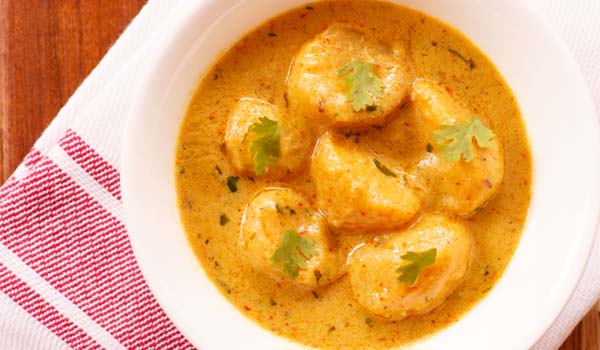Mughlai cuisine is renowned for its meat-based dishes and biryanis, but one of its most beloved recipes is a vegetarian delight known as Shahi Paneer. This dish features fresh, unmelting cheese submerged in a rich, creamy gravy, making it the perfect accompaniment for naan or roti. The term ‘shahi’ translates to ‘royal’ in English, and this dish certainly lives up to its regal name. So why wait? Treat yourself to a royal feast!

About Shahi Paneer
Shahi Paneer is a luxurious North Indian curry celebrated for its indulgent flavors. The word ‘shahi’ literally means ‘royal,’ reflecting the dish’s opulence. It consists of paneer (Indian cottage cheese) cooked in a velvety tomato or yogurt-based curry, enhanced with cream, nuts, and aromatic spices.
Paneer is a fresh cheese popular in Indian cuisine, made by curdling milk with a food acid (often lemon juice) and pressing it into cubes. Notably, paneer does not melt, offering a texture similar to tofu. Shahi Paneer is a favorite among vegetarians and those who enjoy rich, flavorful dishes.
While the fundamental method of cooking remains consistent, there are regional variations and personal adaptations of Shahi Paneer. Some recipes include tomatoes and butter, while others incorporate fruits like pineapple. In this version, I have chosen to use yogurt, nuts, and seeds to lighten the dish.
About My Recipe
This recipe is not the heavily spiced Punjabi version that often features a robust red or orange gravy typically served in restaurants. Instead, this rich and royal Shahi Paneer variation comes from Mughlai cuisine, showcasing a blend of various nuts and seeds like almonds, cashews, and melon seeds, combined with creamy yogurt, onions, fragrant spices, and ghee.
The resulting gravy is creamy, lightly sweet, and slightly tangy, enriched with fragrant flavors from whole spices, especially saffron. A fine paste is made from cooked onions, garlic, ginger, nuts, and seeds, which is then sautéed in ghee with spices. Ground spices and whisked yogurt are added to the paste, followed by some water to achieve the desired consistency. Finally, cardamom powder, saffron strands, paneer cubes, a touch of kewra water, and heavy cream are added to complete the dish.
This version of Shahi Paneer boasts a smooth, creamy consistency, making it ideal for special occasions, festivals, and celebratory meals due to its luxurious taste and presentation.

In these times, comfort food is essential. If you seek a warming, comforting vegetarian dish for dinner, look no further. Shahi Paneer is one of my all-time favorites and is sure to become one of yours too, filling your belly and warming your soul.
How to Make Shahi Paneer
While the list of ingredients for the Shahi Paneer recipe may seem extensive, don’t be intimidated. The process is straightforward and not overly technical.
Preparation
- In a bowl, rinse 2 tablespoons of cashews, 1 tablespoon of almonds, and 1 tablespoon of melon seeds (magaz) a couple of times with water. Drain and set aside.
- Simmer the following ingredients in 1.5 cups of water for 8 to 10 minutes over medium-low heat:
- ½ cup chopped onions
- 2 tablespoons cashews
- 1 tablespoon almonds
- 1 tablespoon melon seeds (magaz)
- ½ teaspoon chopped ginger
- ½ teaspoon chopped garlic
- Continue cooking until the onions soften, then strain some of the stock (the water used for cooking) and set aside.
- Once cooled, blend the softened onions, nuts, seeds, ginger, and garlic in a mixer or blender, adding 2 to 4 tablespoons of the strained stock as needed to achieve a fine paste.
- Whisk ½ cup of fresh yogurt until smooth and set aside.
Sauté Onions & Nuts Paste
- Heat 3 tablespoons of ghee in a pan over medium-low to medium heat until melted. You can substitute oil or butter if desired.
- Fry the following whole spices until fragrant:
- 1 tej patta (Indian bay leaf)
- 2 to 3 cloves
- 2 to 3 green cardamoms
- 1 black cardamom
- 1 inch cinnamon
- ½ teaspoon caraway seeds (shahi jeera) – cumin seeds can be used as a substitute
- Add the ground onion and nut paste, mixing well.
- Sauté on low to medium-low heat for 7 to 8 minutes until the fat begins to separate from the sides of the paste. Keep stirring continuously to prevent burning.
- Stir in ½ teaspoon red chili powder, ¼ teaspoon garam masala, and 1 teaspoon coriander powder, mixing thoroughly.
Adding Curd and Simmering
- Reduce the heat to low or turn it off. Add the whisked yogurt, 1 to 1.5 cups of water, and ½ to 1 teaspoon of sugar, along with salt to taste. Adjust the consistency of the gravy by adding more or less water as needed.
- Stir well and let it simmer on low heat for 10 to 12 minutes, or until the gravy thickens.
Make Shahi Paneer
- Add ¼ teaspoon cardamom powder and crushed saffron strands.
- Stir in the paneer cubes (200 grams) and 1 tablespoon of heavy cream. Optionally, add 1 teaspoon of kewra water. Mix well and turn off the heat.
- For the best texture, use homemade paneer. If using store-bought or frozen paneer, follow package instructions for thawing.
- Garnish with fresh coriander or mint leaves, or a few saffron strands, and serve with rice or flatbread.

Serving Suggestions
This creamy dish pairs beautifully with roti, naan, or paratha. It also complements rice dishes like Jeera Rice or Ghee Rice.
Expert Tips
- Tomatoes: I did not add tomatoes as I used yogurt. However, you can substitute yogurt with tomato puree in equal proportions. If using tomatoes, add 2 to 3 tablespoons of cream to balance the acidity.
- Nuts & Seeds Freshness: Ensure that the nuts and yogurt used are fresh. Rancid nuts or sour yogurt can affect the dish’s flavor.
- About Magaz: Magaz is a blend of pumpkin, watermelon, cantaloupe, and cucumber seeds. If unavailable, use 2 tablespoons of almonds or watermelon seeds instead.
- Rich Variant: For a richer version, add more butter and cream to the recipe.
- Plant-Based Option: Vegans can substitute paneer with tofu and dairy yogurt with cashew or coconut yogurt. Avoid using soy or peanut yogurt.
FAQs
Mughlai cuisine, influenced by the Mughals who ruled India from the 1400s to the 1800s, is characterized by its richness, often incorporating nuts, dried fruits, and warming spices. Dishes like biryani and various flatbreads are notable examples.
Kewra water, also known as kevda or kewda, is a fragrant essence extracted from the male flower of the screwpine. If unavailable, you can omit it or substitute it with a drop of pandan extract or rose water.
While it’s possible to omit onions and garlic, the flavor will change. You can use a pinch of hing (asafoetida) to mimic their flavors.
It’s best to use whole milk yogurt for this recipe, as low-fat yogurt may cause the gravy to break.
While this dish can be stored in the refrigerator for a few days, it is best served fresh from the stove.





